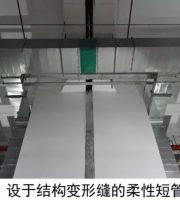In summer construction, the temperature of concrete is higher than the ambient temperature because the foundation or formwork is exposed to the sun.
Therefore, the appropriate curing method and the best curing start time must be selected.
On the one hand, the high temperature of coarse and fine aggregates and cement itself increases the temperature of early concrete, on the other hand, it makes the hydration heat of cement more concentrated, and the high temperature of the environment makes it difficult to dissipate the heat in concrete, so the overall temperature of concrete is much higher than that of concrete constructed in other seasons.
Due to the influence of evaporation and other factors in the process of mixing and transportation in summer, it is easy to cause the water loss of concrete mixture and reduce its workability.
Main features of concrete construction in summer: 1.
The exposed surface is large and greatly affected by the environment.
How to control the spread of influence? Look down.
03 high temperature has an adverse impact on the microstructure of concrete.
When the concrete temperature is above 70 ℃, the change of microstructure is considered to be adverse.
For the newly poured concrete with various curing methods, the curing shall be started after the concrete surface is reshaped and before the surface water film disappears.
Air temperature, concrete mixture temperature, air relative humidity and wind speed are the main factors affecting water evaporation on the concrete surface.
The lower expansion deformation has a reverse constraint on the shrinkage of surface concrete, increasing its tensile stress and adversely affecting the generation of surface cracks.
Under the influence of summer dry wind, high-temperature concrete increases the water evaporation rate of the surface, resulting in rapid water loss on the surface and serious plastic shrinkage, while the high temperature inside promotes the rapid progress of cement hydration and concrete hardening.
For general concrete structures constructed in summer, due to air temperature, material temperature The temperature rise caused by the temperature of formwork or foundation and the concentrated release of cement hydration heat will often make its temperature exceed the unfavorable maximum temperature.
Click “civil engineering horizon” and pay attention to us.
The loss of water on the surface of concrete and plastic shrinkage is the main cause of cracks.
The temperature of supports such as concrete foundation or formwork is high.
Water evaporation not only causes surface cracks.
Increasing air relative humidity increasing air relative humidity can effectively reduce the water evaporation rate on the concrete surface.
Due to the higher temperature in summer, the hydration heat of cement in the concrete is generated in a short time, which promotes the increase of the temperature of early concrete.
Relevant data show that when the temperature is 14 ℃, 43% of the total hydration heat will be generated in the first 24h after concrete mixing; When the temperature is 30 ℃, 62.5% of the total hydration heat will be generated in the first 24h after concrete mixing.
The sudden drop of concrete surface temperature will cause temperature shrinkage on the surface and produce surface temperature shrinkage cracks.
However, the formed surface of the concrete shall not be polluted or damaged during the curing.
Its height makes the cement hydration speed and hydration heat generation speed in the concrete adjacent to it greater than the surface, resulting in an increase in the temperature difference between the surface and the internal concrete.
Moreover, due to water loss, the cement hydration water on the concrete surface is insufficient, which affects the hardening and strength growth of the surface concrete.
01.
Due to the changeable construction climate in summer, such as sudden rainfall, the temperature will drop suddenly.
When the shrinkage is constrained, it is easy to form cracks.
When the whole is cooled, it begins to shrink from this length and temperature, which is very easy to produce overall temperature shrinkage cracks, such as broken pavement plates.
06 when the hardened concrete is constructed at high temperature, the temperature of forming solid determines the base length of the concrete.
The high evaporation rate of surface water causes the loss of water on the surface of newly poured concrete, forming plastic and shrinkage cracks.
It is generally believed that when the concrete temperature is below 50 ℃, the change of base microstructure can be ignored.
When the evaporation rate of concrete surface is greater than 1kg / M ²· H, its surface is easy to produce plastic shrinkage cracks.
Due to the hot climate, the heat in the cement is not easy to be dissipated, and the influence of the sun and other factors, the temperature of the cement is high, and the temperature of some cement can be as high as 70 ℃.) 3.
5.
02 the temperature difference of concrete section causes thermal cracks on the surface.
The high temperature impact of mass concrete is often ignored.
Due to the small deformation resistance of early age concrete, the change of concrete microstructure will not only affect the overall strength of concrete, but also easily form thermal cracks on the surface.
Concrete is a material that is very vulnerable to temperature.
It is a simple and low-cost effective measure to increase the air relative humidity by spraying water in the upwind direction or around the newly poured concrete..
Prevention measures 01 select appropriate curing methods, start curing as soon as possible and keep the concrete surface moist, which can prevent evaporation, reduce shrinkage and ensure the smooth hydration of concrete surface.
When the foundation or formwork is affected by high-temperature concrete, it is also easy to produce expansion deformation, while the thickness of large surface concrete is generally small.
The main causes of cracks are changeable climate.
05 the increase of cement dosage and water cement ratio in construction increases the plastic shrinkage deformation of concrete.
Therefore, it is easy to increase the cement dosage and water cement ratio to improve the workability of concrete during construction, while the increase of cement dosage and water cement ratio is more likely to cause shrinkage.
As the weather gets hotter and hotter, there is a problem in front of us, that is, concrete construction in summer.
Under the combined action of severe plastic shrinkage on the surface and internal constraints, the plastic shrinkage cracks on the concrete surface are caused.
When the difference between the surface temperature and the internal temperature exceeds 15 ℃, it is easy to produce surface thermal cracks.
4.
The higher the temperature of the concrete itself, the smaller the relative humidity of the air, the greater the wind speed, and the greater the water evaporation rate of the concrete surface.
04 the changeable climate makes the concrete surface vulnerable to cold shock.
Hot climate and high temperature 2 The temperature of the constituent materials of the concrete is high (due to the high temperature and sunlight, the temperature of the sand and stone materials used to form the concrete mixture is high; the temperature of the newly manufactured cement is often high.



